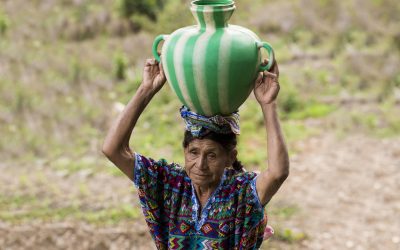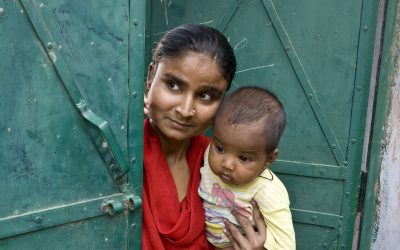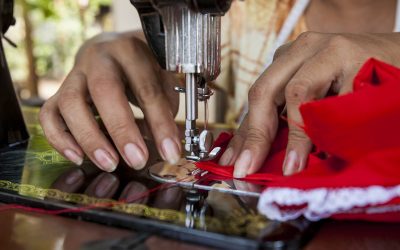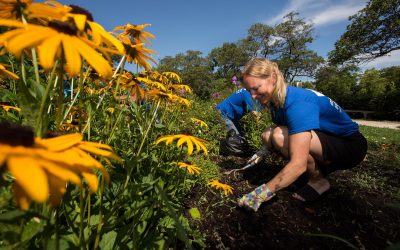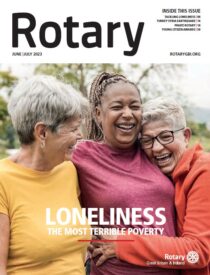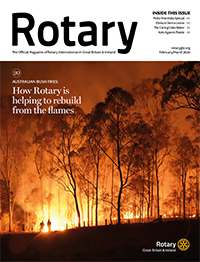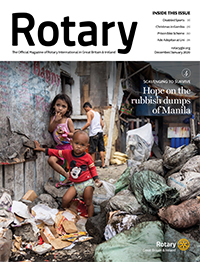Families in Uganda, like those in other parts of Africa, Asia and South America, cook their meals on open fires using firewood or charcoal.
Due to high population growth, the country is becoming more densely populated. This leads to pressures on land for farming, forests diminishing and firewood increasingly hard to come by.
We found that the women in rural areas are now spending up to five hours daily to collect a bundle of firewood.
In addition to the time and effort involved, this exposes them daily to the risk of sexual harassment.
Cooking on open fires in smoke-filled kitchens is also very unhealthy.
The World Health Organization reckons that spending one hour in a smoky kitchen equals smoking 400 cigarettes. It is the main cause of eye and lung disease, and it damages the development of unborn children.
Obviously, cutting down trees has a detrimental effect on the environment by reducing water retention, increasing soil erosion and diminishing rainfall.
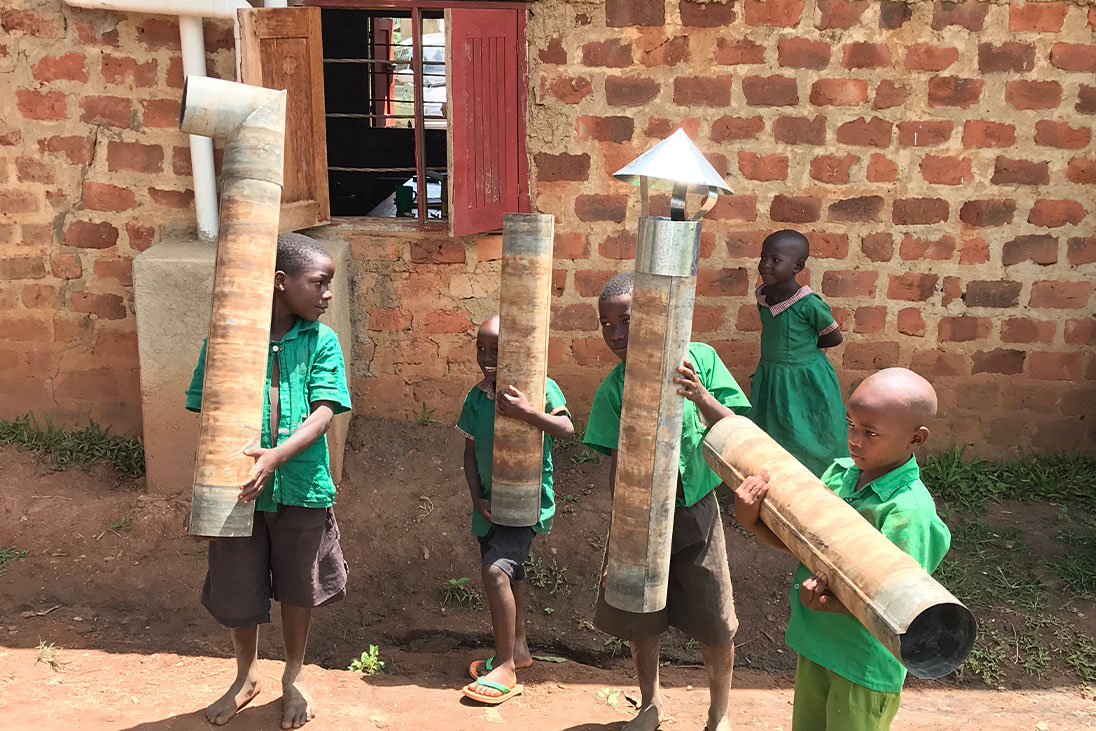

Abingdon Vesper Rotary’s initiative of adopting a school appeal to build a fuel saving eco-stove, won the Rodney Huggins’ Rotary GB&I environmental project award.
For all these reasons a sustainable energy solution for cooking is a necessity for three billion people in the world.
For people to accept a change to their daily habits it is important that the solution is practical, affordable and maintainable.
We came across the existence of traditional African stoves which use up to 70% less firewood and greatly reduce the amount of smoke from cooking. People had largely forgotten about such stoves, possibly because so many lives were lost during periods of political upheaval.
The stoves are made from free local materials like dried grass, various kinds of soil, ash, sawdust, sweet potato leaves, water and cow-dung.
These are mixed together into a kind of clay from which the eco-stove is constructed. Banana stems are used to keep the smoke-channels and the seats for the pans open. Once formed, the stove needs to dry slowly before the final shaping of the fire-openings and pan stands.
This takes about two to three weeks.
Construction requires a fair amount of physical effort, but with a trained person on hand, most people can build their own stove. Once finished, several pans can be cooked simultaneously with one fire.
We came across the existence of traditional African stoves which use up to 70% less firewood and greatly reduce the amount of smoke from cooking. People had largely forgotten about such stoves, possibly because so many lives were lost during periods of political upheaval.”
The fire burns evenly and efficiently. There is less smoke and less risk of burns.
The fire needs little attention, so that other tasks can be carried out during cooking. There is no ash in the food.
All the people we met were happy with their eco-stove and would not want to go back to open fires.
The time women save by having to make only two instead of seven wood-gathering trips adds up to 60 days a year.
This time and energy could be used to make bio-briquettes from harvest or food waste, thus reducing the need for firewood even further.
There may be other more sophisticated stoves on the market, but most people cannot afford them.
As semi-subsistence farmers, they are very short of cash. We know from our work with farmer groups that saving just £2 a month is a struggle. The beauty of the mud eco-stoves is that they cost only labour and can be repaired just as easily without the need for spare-parts or technical assistance, which are often unavailable in developing countries.
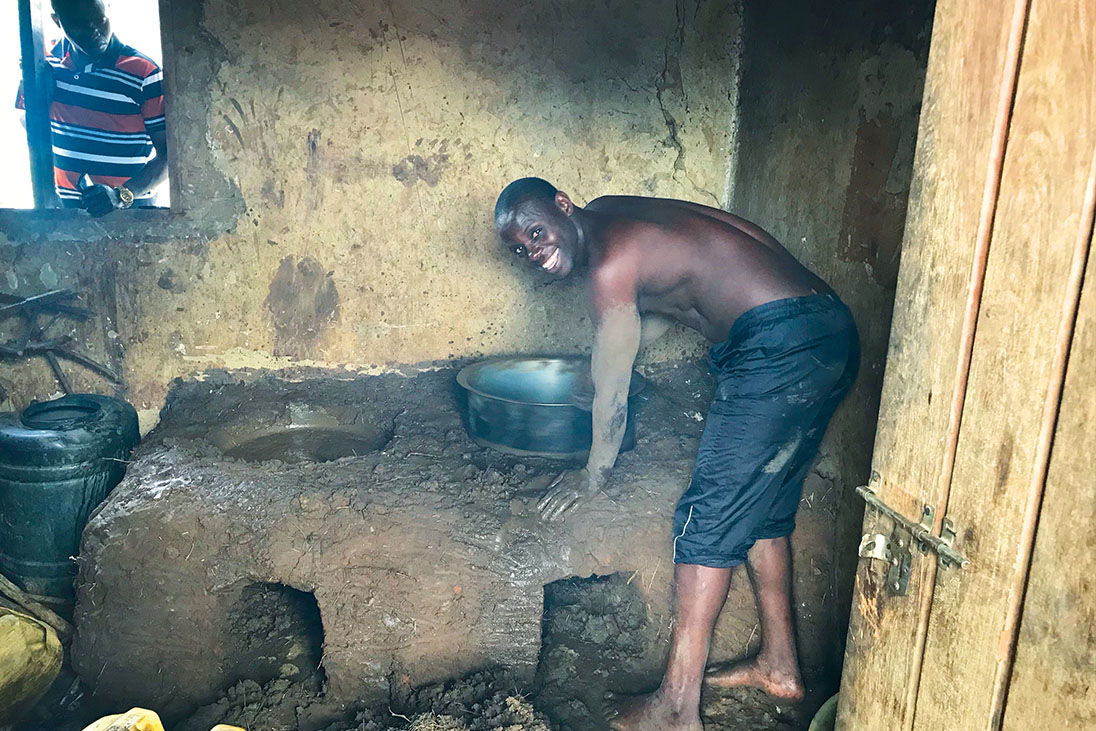

All the people we met were happy with their eco-stove and would not want to go back to open fires.
Once a group of families in a village is using an eco-stove, neighbours want them, too. This snowball effect has led to 2,000 eco-stoves being built in one year.
Instruction leaflets have been produced and radio time bought to further spread awareness.
But eco-stoves are not only needed in homes, they are also needed in schools.
In Mubende District alone, 200,000 school meals a day are cooked on open fires in school kitchens, devouring masses of firewood.
Planting new trees is necessary, but they take time to grow. Fuel saving eco-stoves have an immediate effect on saving existing trees and will allow newly planted trees to grow. So, both actions are needed to combat climate change.
Under the Learning 4 Life School Development Project, we have constructed a bigger version of eco-stove to accommodate the huge pans used in schools.
To date 16 stoves have been built at schools at a cost of £250 per school.
But eco-stoves are not only needed in homes, they are also needed in schools.”
It needs a team of two trainers and three local workers making five trips to the school, which involves renting a motorbike, to complete a stove.
The local people are trained on the job, so that they become the new trainers in their communities. Support is needed to expand the programme to more schools.
Please help by adopting a school for £250 which will cover the cost of labour, transport, two chimneys and some trees.
The developed world is the main contributor to global warming.
Sub-Saharan countries have contributed very little, but they will be the first to suffer the consequences. It is only fair that we give them support to help themselves.
Contact: Maya Smeulders – mayasmeulders@hotmail.com for more information.


